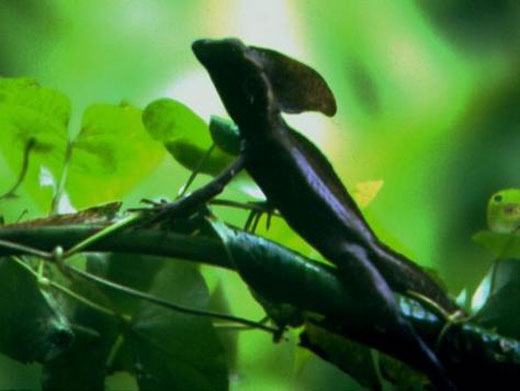Siberian Musk Deer
Siberian Musk Deer males excrete musk from a special gland, which is located on their bellies. Musk is rich in hormones and is widely used in perfumery. Unfortunately, this is a reason why these small deers are widely hunted, as musk is very valuable – in 1972, in Nepal, musk was more expensive than gold.
These deers are quite small in size, reaching only 80-100 cm in length and 50-80 cm in height. They inhabit Siberia, China, India and a handful of other regions in Asia. Their fur is short and the colour varies from gray to chestnut. The deers also have long nails that help them when traveling through mountain areas, and the males have impressive tusks that grow out of their mouths.
The Siberian Musk Deer is a very skittish animal, who relies on its sense of hearing in almost all situations. The deer’s behaviour might seem very nervous – every once in a while the animal stops and listens in the sounds, and runs upon hearing even the tiniest noise. What scares them are the sudden, disturbing sounds, like a branch cracking, but they do not pay attention to monotonous sounds like cars driving by or humans talking.
These mammals usually lead solitary lives. Only during the mating period, females gather in small groups, which are immediately disbanded after the period is over. Each male holds a territory of a few hundred square kilometres, which might overlap with territories of some females. The Siberian Musk Deers rarely wander away from their territories, and they mostly go along paths that are well known. They feed at late evening or night, but during the day they rest in their dens.
Siberian Musk Deer is a ruminant creature, just like the other small deers. They’re not very fastidious about their diet and in regions that are rich with vegetation, the deer may eat up to 130 different vegetation species. In areas where plants are scarce, the deer eats lichen and moss which they dig up from under the snow. In extreme cases they can chew off tree bark or raise on their hind legs and pick off leaves from the trees.
The mating period of Siberian Musk Deers falls in winter – from November to January. During this time, the males start searching for females in the surrounding territories, and they occasionally become aggressive towards each other, sometimes even biting each other to death. After copulation, the male is no longer interested and the upbringing of the young is considered the mother’s responsibility. After six months, 1-3 calves are born. They develop fairly quickly and after a few months already start independent lives. Their total life expectancy is 10-12 years in the wild and up to 13 years in captivity.
For centuries, Siberian Musk Deers were hunted for the precious musk, which is widely used in perfumery. Because of hunting, the population of these deers was reduced severely, almost bringing them to the brink of extinction. Nowadays, musk is obtained artificially, thus the need for hunting these deers is gone, and the Siberian Musk Deer population is slowly recovering.




